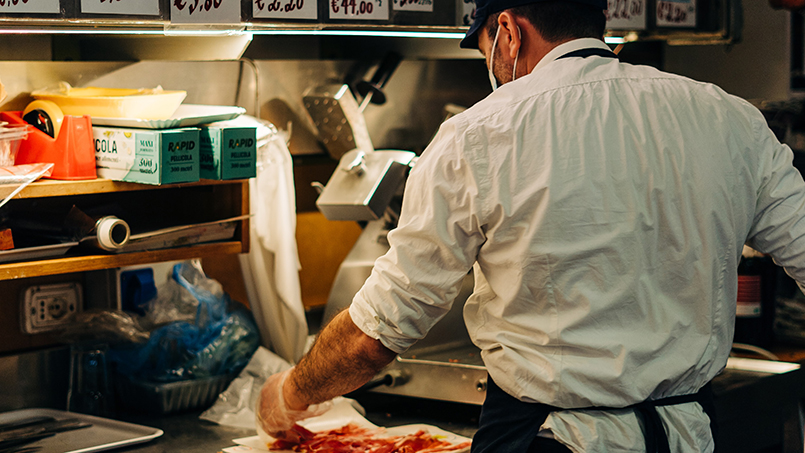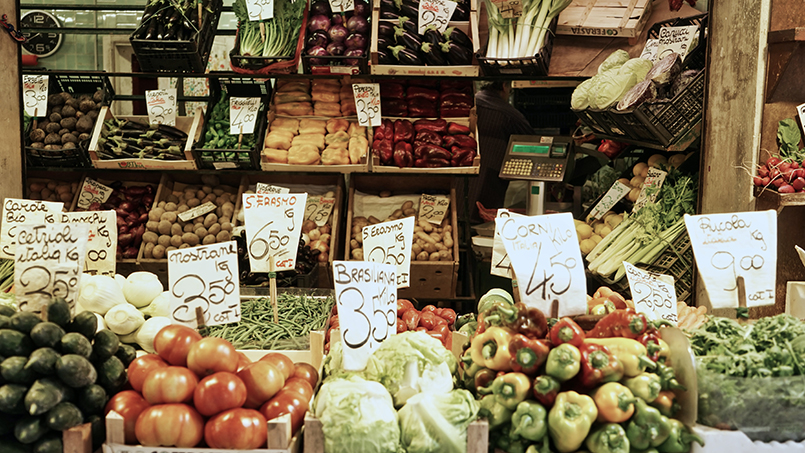Tuesday 17 May 2022 09:05
Cultural differences: grocery shopping in Italy (updated 2022)
Three years ago we released what has become one of our most popular blog posts, one on how to do your own grocery shopping while visiting Italy. This was particularly relevant for Rome, where the accommodations we manage are surrounded by a number of convenience stores and smaller iterations of big name chain supermarkets, which […]
read the news on From Home to Rome

Three years ago we released what has become one of our most popular blog posts, one on how to do your own
grocery shopping while visiting Italy
.This was particularly relevant for Rome, where the accommodations we manage are surrounded by a number of convenience stores and smaller iterations of big name chain supermarkets, which you’ll want to get familiar with if you decide to stay in one of our properties.
We decided to write a different version of that old article to address the most relevant questions we’ve been receiving from our guests, so… Here goes!
Due to the large majority of buildings in the city center being listed, supermarkets like one would see in a mall are not found near our managed accommodations. The ones that are in the super central areas of Rome are small, with cramped aisles. They only carry essentials and they are aimed at employees for the many government and company workers commuting each day to the big city, as well as – obviously – tourists.
Some supermarket chains typically found in the center of Rome include Conad, Carrefour, Coop, PAM, Tuodì, Pewex, Todis. Further out in residential suburbs you may find also Esselunga, LIDL, Eurospin. Of course the biggest branches are in malls. Convenience stores with the words “Alimentari” or “Frutta e verdura” on their front are also easily found around major landmarks like the Colosseum or the train terminal at Termini.
Given the space restraints we just described, you won’t find a complete range of all possible products in these stores, and they sell a limited amount of brands on their shelves. Many Italian families living in the city center make up for this with
online grocery shopping at these brands’ online portals
, or they buy fresh produce, fish or meat at food markets like the ones discussed here
.Celebrated places like Roscioli or Eataly can also help buying more upscale products, but of course this will come at a higher price (literally speaking).
Typically, though, what’s available in these small supermarkets is enough to satisfy your holiday needs, and can even help with local foods to bring back home!
It may seem obvious to you, but many of our guests start feeling confused right at the entrance of a Roman supermarket: this is where baskets or carts can be found. The latter usually must be unlocked from a chain using a coin. Don’t forget to retrieve it when you’re done shopping!
By the way: if you feel like you can’t carry all of your groceries, know that they can be delivered by paying a little extra. Ask the clerks if this is a service their individual branch provides, if interested.

Every basket in the produce section comes with a plastic sign that will have a number on it. This is important because the price for what you pick won’t be memorized at the registers. So pick your fruits or fresh vegetables, put them in a provided plastic bag (one per type of produce), bring what you chose to a scale and weigh it entering the different numbers you’ve seen at their respective baskets. You’ll get a sticker that will have to be attached to the plastic bag containing what you picked.
Oh, and don’t forget to wear plastic gloves while doing all of the above: they’re single use and free and MUST be worn if you want to touch anything in that particular section. If there are no plastic tags with a number on certain goods, like fresh avocados for instance, this usually means that the price indicated is per piece, so you won’t need to weigh those. Sometimes signs also fall off, so if a quick investigation isn’t successful, feel free to ask for help!
In smaller shops like convenience stores, it’s usually the clerk there picking and weighing the stuff for you, or they will pass you a paper bag to pick produce yourself which they’ll be weighing next (opposite to what happens in food markets, where you will be asked not to touch anything). Generally speaking, this is one of those situations where peoplewatching is encouraged and recommended depending on where it is that you go grocery shopping!
Using that much plastic for bagging produce, as mentioned above, may seem unnecessary but unfortunately it’s part of a scheme aimed at reducing contaminations from when people kept touching fruits & co. without actually buying any. There’s a small cost for the transparent bags in the produce section, which is unavoidable, but you can compensate that extra fee by bringing your own bags to bag your shopping at check out: the plastic bags provided there also have a cost (0.10 EUR per bag, typically). Plus they’re not particularly sturdy, being made with a biologically degradable type of plastic. So if you don’t want to spill your food throughout the streets of Rome, you know what to do!
Most supermarkets provide pre-packaged cold cuts or sliced cheeses in the refrigerated aisle but if you’re tempted, like us, by the variety in the cheese /charcuterie display, go wild there! The tested point-at-what-you-like technique works, should the clerk there not understand English.
Prices on the signs for each type of product you see tend to be per kilo, unless displayed differently (for things like truffles, it could be per 100 grams). If you want to try cured meats but not overdo it, go for “un etto” (100 grams), which is usually enough to be part of a meal for two people (like filling in a sandwich, for instance). When we do charcuterie boards, 100 grams of each type we buy are great for 6-8 people. With cheese, you can try a little more, like “due etti” or “three etti” if you’re really a fan!
Note: remember that almost small supermarkets and delis can accommodate you and prepare fresh sandwiches for you, which is some of the cheapest food you can get in Rome!
Due to difference in health legislation, eggs in Italy (and in other European countries) don’t get “washed” but undergo other type of processing to avoid the spread of bacteria or diseases, so you will see them in regular aisles, not in the supermarket fridges. A real fascinating explanation is
here
, for all of those who are interested.With milk, it is slightly different: pasteurization is done differently and some types of milk with a longer shelf life will be also stored in regular aisles for this reason. Fresh milk will be in the fridge where you’d usually find it if you’re from North America.
If back home a bagger is someone you are used to seeing at checkout, note that this isn’t at all available in Rome, or in Italy for that matter. You’ll have to bag your groceries yourself. This also extends to those larger supermarkets that have a self-checkout area.
Don’t get nervous if you feel like people in line with you seem too close – as mentioned, supermarkets in the city center are really small and this can happen.
Finally, if you’re shopping at big chain supermarkets, you will be able to pay with a card or with your phone, whereas for paying in a small convenience store or at a food market you will almost always need cash.
If we feel like we’ve unloaded you with too much information, we’re sorry! We’re trying to answer all of the questions we get from the travellers we meet 
That doesn’t mean you have to feel overwhelmed by a Roman supermarket experience: even if you don’t need to shop for anything, take 10 minutes out of your Italian days to explore a grocery store. It’s one of the best ways to get immersed into the local culture, learning what are some of the popular items on display, marveling at the different formats or “using” other shoppers to your advantage to, as mentioned, learn how to do some of those procedures that we described!

That doesn’t mean you have to feel overwhelmed by a Roman supermarket experience: even if you don’t need to shop for anything, take 10 minutes out of your Italian days to explore a grocery store. It’s one of the best ways to get immersed into the local culture, learning what are some of the popular items on display, marveling at the different formats or “using” other shoppers to your advantage to, as mentioned, learn how to do some of those procedures that we described!
Even saying hello as you enter can go a long way and help establish a relationship with the clerks, who will be happier to give advice to someone they perceive like a return customer!
